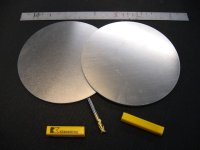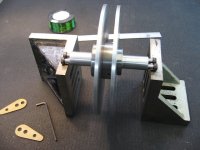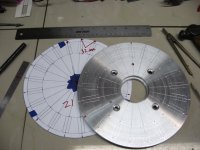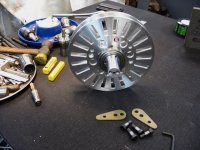APL
100 kW
- Joined
- Aug 6, 2018
- Messages
- 1,113
The Motor Gods were smiling down on me today. I got the phase wire holes drilled without a hitch, plus, the bearings
came in, and I was able to finish turning the surfaces.
Bearings are NSK #2006, and a SKG #2008.

I was able to push a 5mm O.D. wire through without to much trouble, and could probably get a 6mm with a little
bigger hole. Phase wires aren't going to be near that big, but it will be nice to add some shrink tubing.
I have to chamfer some edges yet.
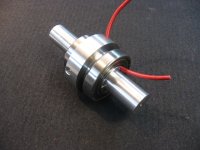
The 68mm #2008 bearing is huge! I'm definitely not saving any weight anywhere yet.
I think I might be building a tractor motor... :?
came in, and I was able to finish turning the surfaces.
Bearings are NSK #2006, and a SKG #2008.

I was able to push a 5mm O.D. wire through without to much trouble, and could probably get a 6mm with a little
bigger hole. Phase wires aren't going to be near that big, but it will be nice to add some shrink tubing.
I have to chamfer some edges yet.

The 68mm #2008 bearing is huge! I'm definitely not saving any weight anywhere yet.
I think I might be building a tractor motor... :?



